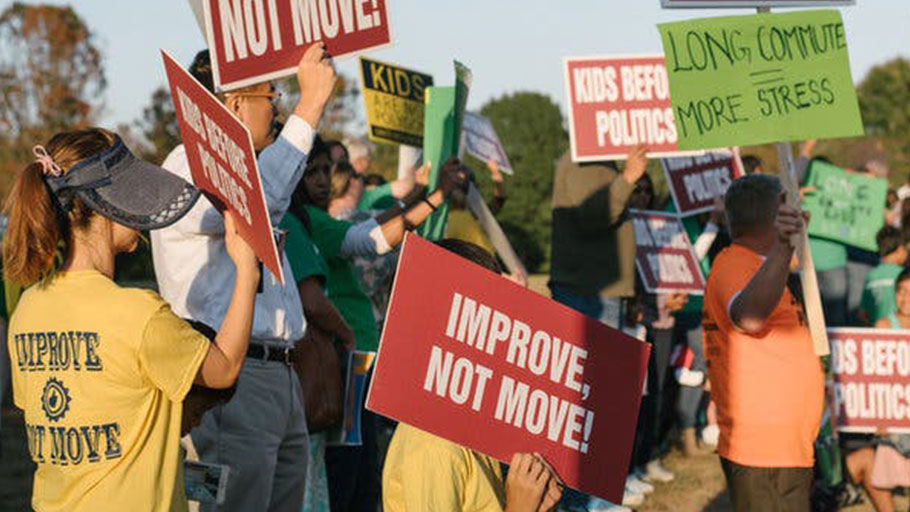Protesters outside the Howard County Board of Education building in Ellicott City, Md., last month. Photo by Andrew Mangum for The New York Times.
A plan to desegregate schools in a liberal Maryland suburb founded on values of tolerance has met with stiff resistance.
By Dana Goldstein, New York Times —
Columbia, Md. — The planned community of Columbia, southwest of Baltimore, has prided itself on its ethos of inclusion ever since it was founded more than half a century ago. Racially integrated. Affordable apartments near big homes. “The Next America” was its optimistic, harmonious motto.
But a recent proposal to restore some of that idealism by balancing the number of low-income children enrolled in schools across Howard County, including those in Columbia, has led to bitter divisions. Protesters in matching T-shirts have thronged school board meetings. Thousands of letters and emails opposing the redistricting plan, some of them overtly racist, have poured in to policymakers. One high school student made a death threat against the superintendent of schools, Michael J. Martirano.
The plan, announced by Dr. Martirano in August, would transfer 7,400 of the district’s 58,000 students to different schools in an effort to chip away at an uncomfortable truth: Some of the county’s campuses have become havens for rich students, while others serve large numbers of children whose families are struggling.
Dr. Martirano’s plan, which he called Equity in Action, would also alter the racial makeup of some schools, given that the majority of poor students in the county are black or Hispanic.
A growing body of research suggests that bringing students of disparate races and social classes together can boost children’s test scores and help them develop empathy. This year, all the leading Democratic presidential candidates have proposed desegregation strategies, a seismic shift after decades in which politicians from both parties played down the impact of the racial and class segregation that persists in American education.
Howard County is one of many school districts, from Dallas to New York City to San Francisco, now grappling with the challenges of integration. The virulent opposition in an area that its founder once declared to be “color blind” shows that the issue remains deeply divisive among liberals when it comes to their own children.
That there is a racial dynamic to the struggle in Columbia is undeniable. It is mostly white and Asian parents who are protesting the plan. Black and Hispanic children are more likely to be concentrated in schools with large numbers of poor students.
One piece of hate mail opposing the proposal said, “Blacks destroy school systems and schools.” Another said, “Certain families and communities do not have strong values in healthy family structure, high expectation on education, or firm beliefs in raising kids with good characters.”
But a group that has organized much of the opposition, Howard County Families for Education Improvement, said the racism and classism of those letters had nothing to do with its stance against the redistricting effort, which the Board of Education will vote on this month.
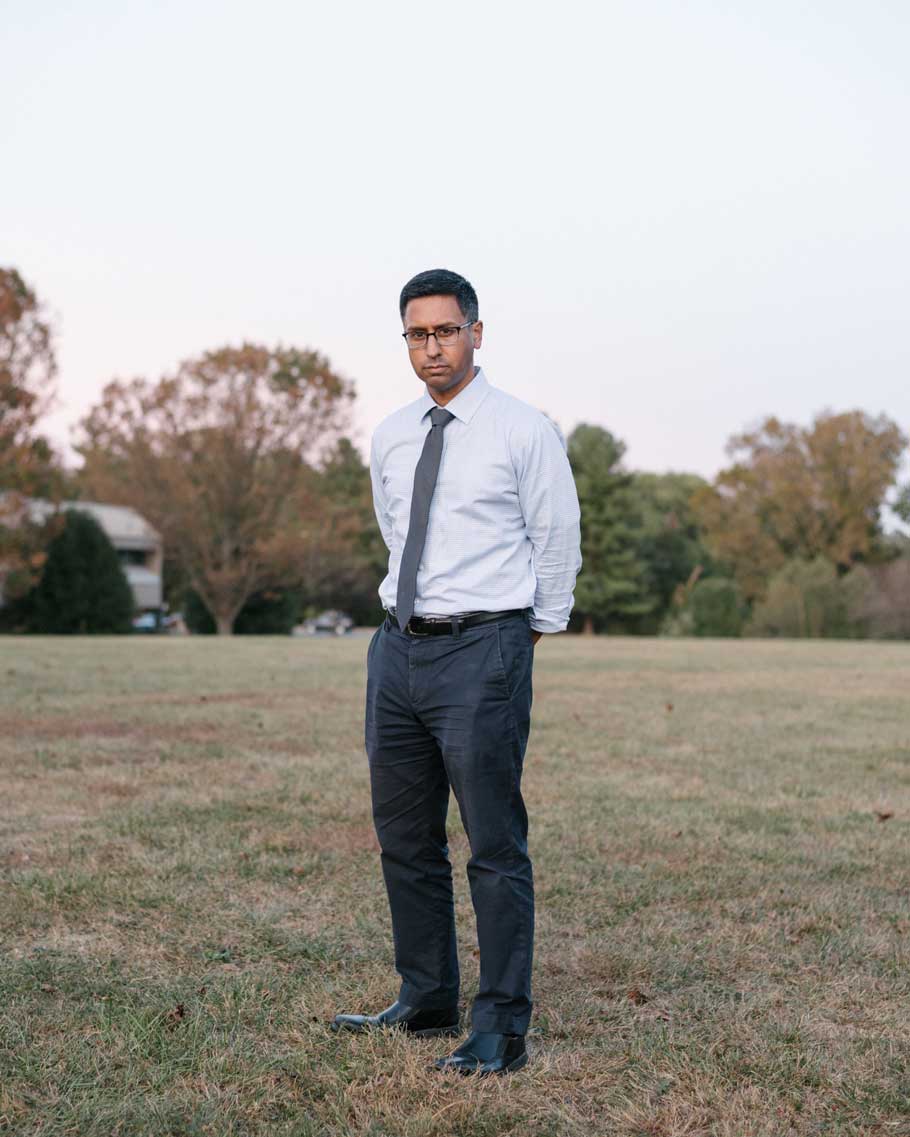
Hemant Sharma, a member of a group that opposes a redistricting proposal in Howard County. Photo by Andrew Mangum for The New York Times.
The protesters acknowledged that they did not want their own children bused to schools farther from home. But they preferred to talk about other people’s children — those with less advantage — who they believed would suffer under the plan.
Longer commutes to school, they argued, would mean less time for students to do homework and to sleep. Some children would be severed from friends they had made in earlier grades. Low-income parents with inflexible jobs would be hit the hardest, and would not be able to get involved in their children’s schools.
“I know for a fact that none of the folks I’ve met in opposition at all would be characterized as racist, and in fact, my motivation is the exact opposite,” said Hemant Sharma, a pediatrician, father and representative of the opposition group.
“The children who will be harmed most disproportionately are those in greatest need,” he added.
Fighting Stereotypes
Many of the protesters’ children are now assigned to attend River Hill High School, wherefewer than 5 percent of current students are from low-income families, according to district data. Under the proposal, they would be bused, as soon as next August, to Wilde Lake High School, where 46 percent of current students’ families are low-income.
Poverty rates at more than half of the district’s 77 schools would be shifted closer to the districtwide rate of 22.5 percent under the plan, which would also alleviate overcrowding on some campuses. The average bus ride for students throughout the county would increase by two miles each way, said Brian Bassett, a district spokesman.
On a recent afternoon, six Wilde Lake students gathered in the parking lot of a shopping center near the school, outside an organic supermarket and a Starbucks.
Some of the students had seen parents from other neighborhoods marching nearby, demanding that their own children not attend Wilde Lake. They had heard about the racist letters.
“I feel sorry for the people who think like that,” said Alisa Drake, 16.
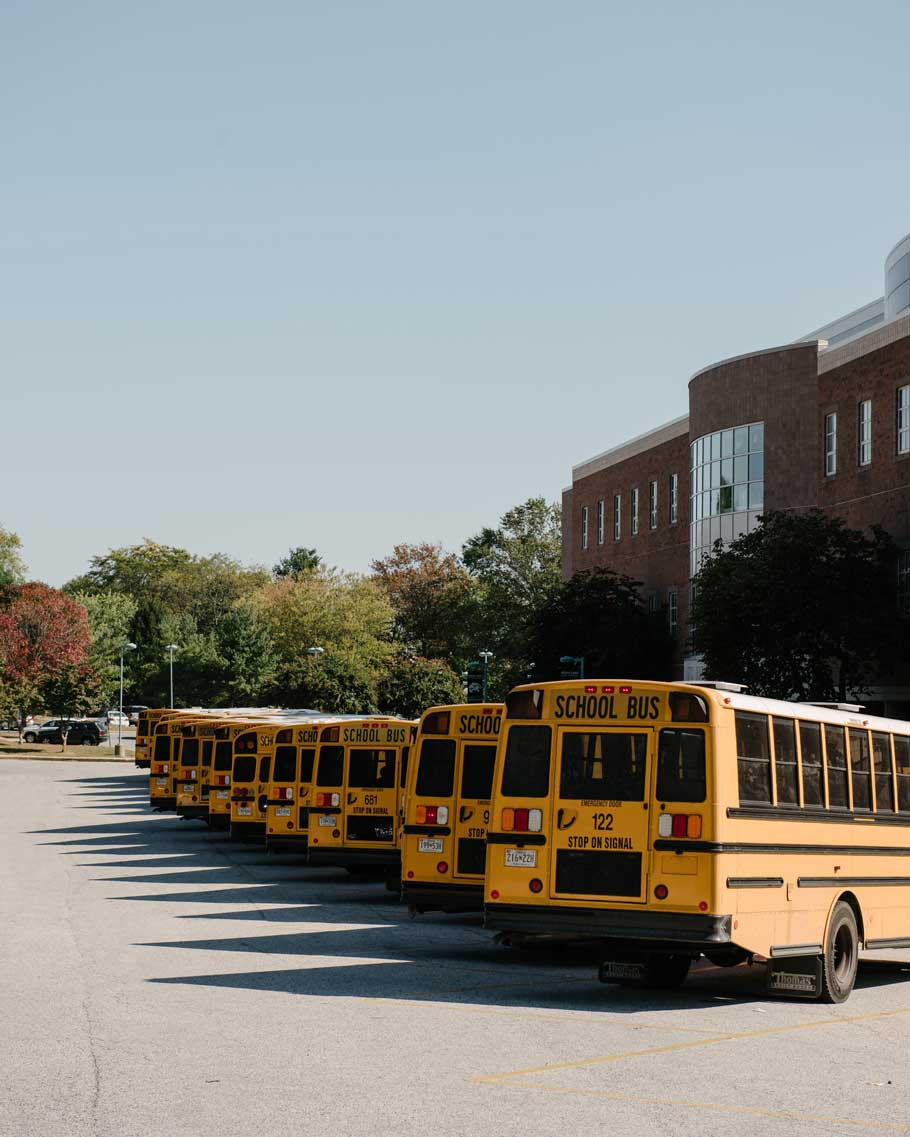
The plan would move some of the protesters’ children to Wilde Lake High School. Photo by Andrew Mangum for The New York Times.
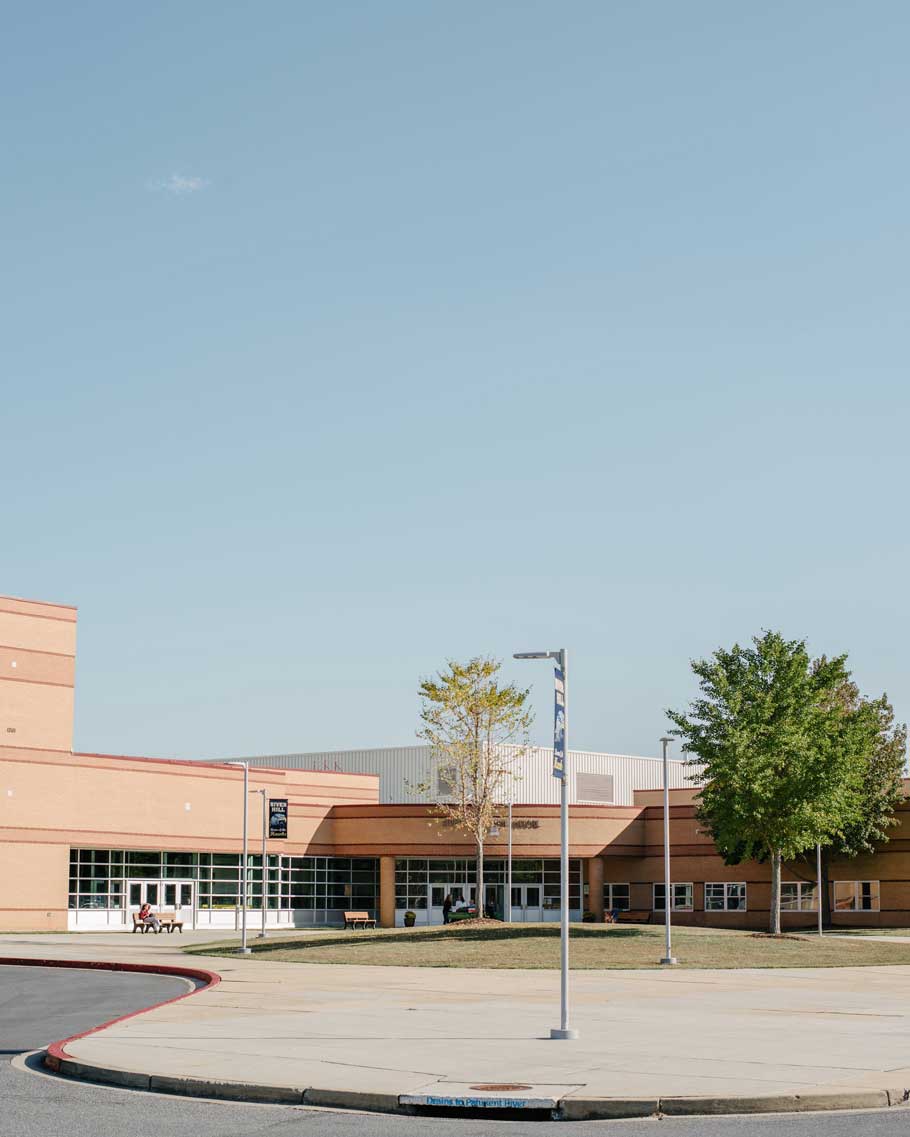
Many of those students are currently zoned for River Hill High School. Photo by Andrew Mangum for The New York Times.
The theater at Wilde Lake was named after Jim Rouse, the developer who created the city of Columbia in the 1960s out of 14,000 acres of farmland. He intended it to be an ideally integrated community, and the first baby born to a Columbia family, in 1967, was biracial, with one black and one white parent. The child was a poignant symbol of the community’s professed values.
In more recent decades, development in Howard County expanded westward, and newer housing developments did not include many affordable homes. Central Columbia, which includes Wilde Lake, is denser and has different demographics than outlying areas of the county. At Wilde Lake High School, 45 percent of students are black and 13 percent are Hispanic, while at River Hill High School in nearby Clarksville, 7 percent of students are black and fewer than 5 percent are Hispanic.
Many of the Wilde Lake students agreed with Alisa: They had heard bad things said about their school, things that they, too, had sometimes believed before they enrolled.
Alisa rattled off the stereotypes: “It’s a ghetto school. The test scores are not good. They’re all good at sports because they are black.”
Wilde Lake offers 25 Advanced Placement classes, including multivariate calculus, French and studio art. Graduates land at a range of colleges, students said, from Howard Community College to the honors program at the University of Maryland and Johns Hopkins University.

Alisa Drake supports the redistricting proposal, which she said could help “change the narrative” about Wilde Lake and the students who go there. Photo by Andrew Mangum for The New York Times.
Average standardized test scores are indeed lower at Wilde Lake than at River Hill — not surprising for a school where nearly half the students come from low-income families. But Alisa said she would not want to go anywhere else. Wilde Lake teachers made her, a black student, feel comfortable in her gifted and talented and A.P. classes, she said.
Alisa supports the redistricting proposal, which she said could help “change the narrative” about Wilde Lake and the students who go there.
Talking Points
The opposition group, Howard County Families for Education Improvement, has an approach that appears carefully crafted to distinguish itself from decades of past resistance to school desegregation plans.
A page on the group’s website — a page that was later hidden after local news coverage — advised opponents of the plan to be mindful of their talking points and slogans.
“I love my school” was acceptable. “I don’t want to go to (fill in the blank) school” was not.
A reference to a long bus ride was acceptable. Any reference to “forced busing,” the coded language used by opponents of desegregation efforts in the 1960s and 1970s, was not.
Dr. Sharma said the group’s members were listening to and learning from criticism, especially from the African-American community.
“What I think is important is that we all recognize the historical context,” he said.
The son of immigrants from Guyana of Indian origin, Dr. Sharma, 44, grew up in Howard County. He acknowledged the national research on the benefits of socioeconomic integration, but he suggested that the studies might not apply to the county’s schools, where concentrations of poverty are not as extreme as in some other areas. He cited several studies on policies that he said would help low-income students more than desegregation would: pre-K, meditation, tutoring, school choice.
He argued that Asian-Americans, a growing group in Howard County, had not been represented on a committee that helped the superintendent develop the redistricting plan. Local chapters of the Chinese-American Parenting Association and the Indian Origin Network oppose the proposal.
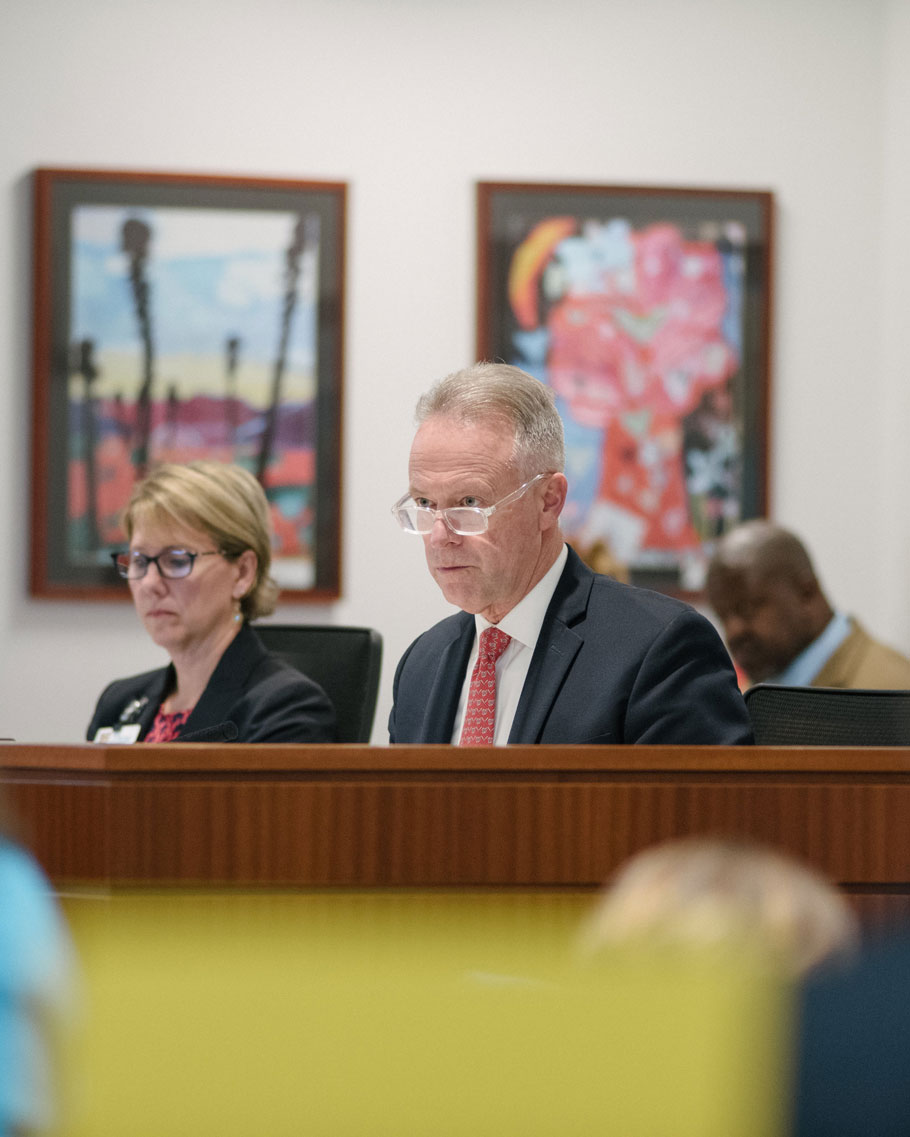
Michael J. Martirano, the school superintendent, whose plan would move 7,400 of the district’s 58,000 students to different schools. Photo by Andrew Mangum for The New York Times.
After a protest last month outside the Board of Education headquarters, parents streamed into the meeting room and stepped up one after another to the microphone. There had already beenhalf a dozen similar meetings, with over 500 speakers, the overwhelming majority of them in opposition.
They were Democrats, they said, consultants to social justice nonprofits, teachers, veterans’ advocates.
They compared the freedom to choose a public school to the freedom to choose an abortion. If the redistricting plan moved forward, they said, students might die in car crashes driving to campuses further away. They might turn to suicide because of the increased stress of longer travel times.
One speaker said the plan reminded her of the Communism her parents had fled in Romania.
During a break in the proceedings, one of the opponents, Ron Brade, said he had donated a brick to be placed under the flagpole at River Hill High School, with his youngest daughter’s name and graduation year, 2025, already inscribed on it.
“We consider ourselves a River Hill family,” he said.
Mr. Brade, who is black, acknowledged “the divisiveness this whole process has created.” Unlike some of his neighbors, he said that if his child had to be bused away from River Hill, he could get used to her attending Wilde Lake.
Second Thoughts
The strength of the opposition has caused some Wilde Lake families to question whether redistricting is a good idea, recalling the skepticism that communities of color sometimes have toward integration as white resistance persists over decades.
Amaiya Sancho, a Wilde Lake junior, had the sense that “a majority” of her classmates did not want River Hill students bused to Wilde Lake.
She wrestled with the pros and cons of the plan. “Diversity is something that is important to me,” she said. “But I don’t want people in our school who feel like they don’t want to be around a group of kids because of the way they look or how much money they have.”
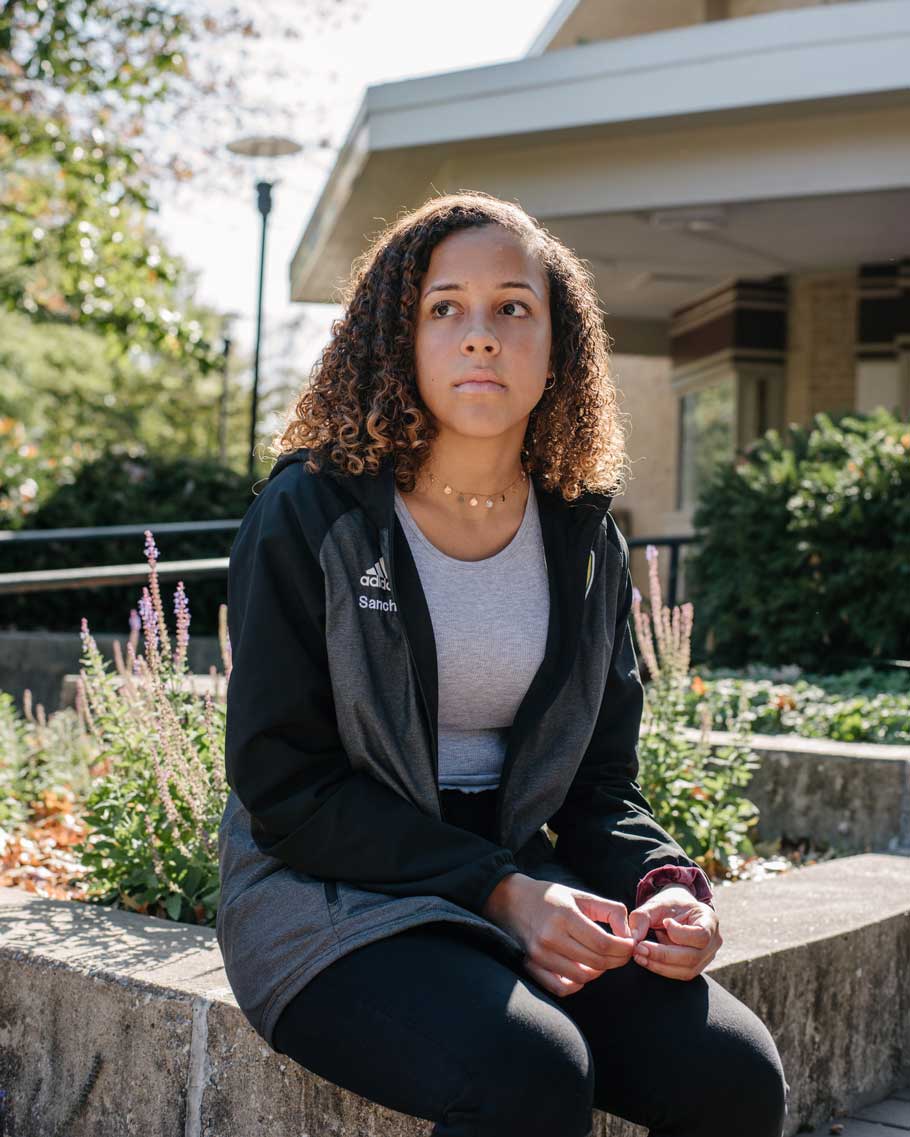
Amaiya Sancho, a junior at Wilde Lake High School, wrestled with the pros and cons of the plan. Photo by Andrew Mangum for The New York Times.
The superintendent’s plan would lower the poverty rate in Wilde Lake’s student body to 38 percent from 46 percent.
Richard D. Kahlenberg, an expert on school segregation and a senior fellow at the Century Foundation, a public policy research organization, said that with poverty becoming more concentrated in Howard County, “any prudent school official would know that now is the time to intervene.”
In meetings last week, the Board of Education essentially restarted the planning process, and proposed alternatives to Superintendent Martirano’s proposal, which now seems unlikely to pass as written. The school district declined to make the superintendent available for comment during the board’s deliberations.
The board is scheduled to vote on redistricting on Nov. 21. The fight leading up to the vote has been a profound challenge for a diverse county that prides itself on its history of getting along. The bumpers of many local cars display a magnet with a long-running countywide motto, one that is frequently cited by both sides in the debate: “Choose civility.”
This article was originally published by The New York Times.
Dana Goldstein is a national correspondent, writing about how education policies impact families, students and teachers across the country. She is the author of “The Teacher Wars: A History of America’s Most Embattled Profession.”

